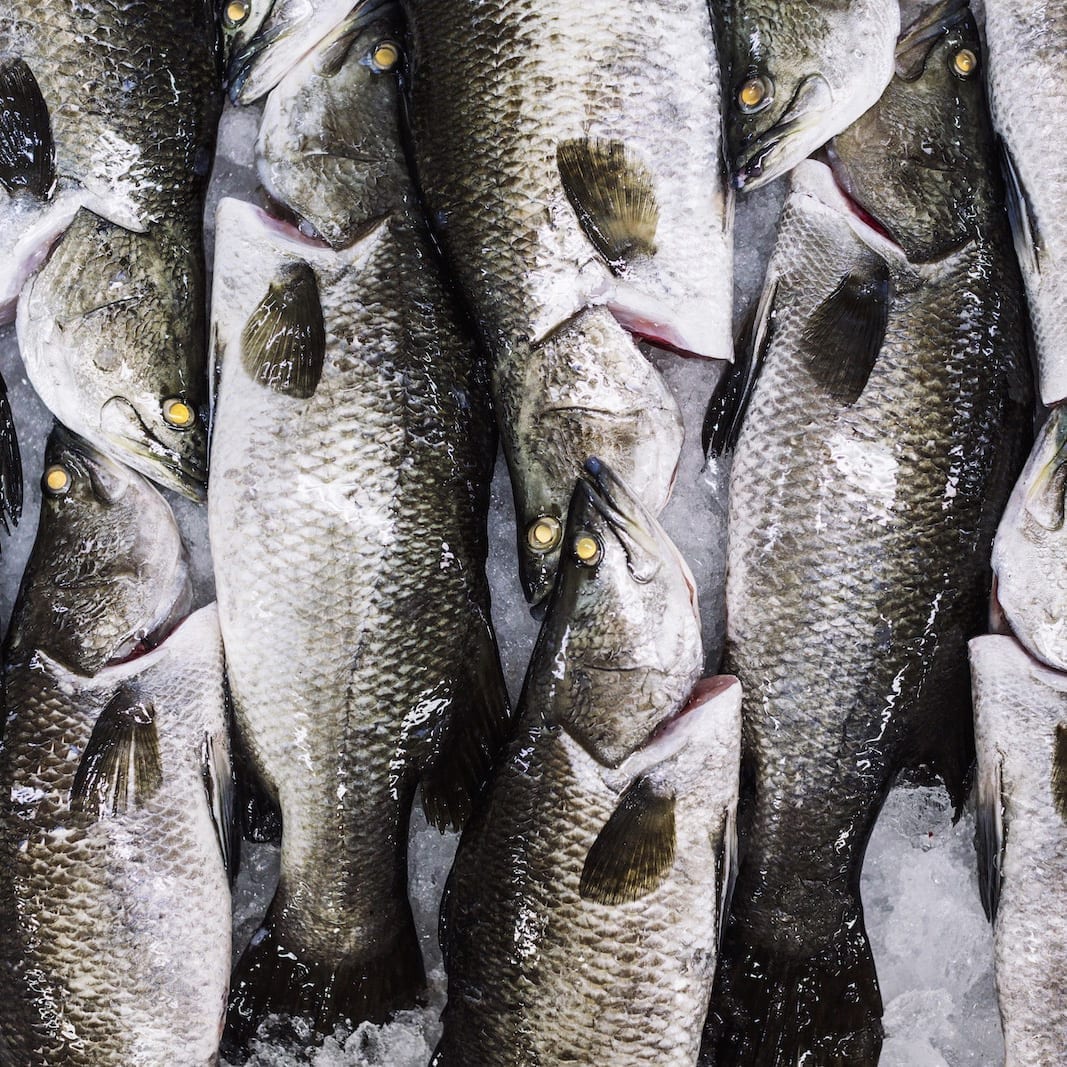Four Terms You Need to Know When Buying Sustainable Fish

The fish at your local market likely has many labels making it confusing to know which types of fish are sustainable.
By understanding just four simple terms used to categorize seafood, you’ll be able to navigate the fish counter like a pro when buying sustainable fish, like barramundi.
Wild: Wild fish live and are caught in open waters and eat a natural diet, making them very healthy and nutritionally dense. Fish sourced with nondestructive selective fishing methods from well-regulated fisheries are a healthy and responsible choice. However, dragging and unregulated or illegal fishing have led to the decline in wild fish populations and habitat degradation. Additionally, ocean pollution can lead to unhealthy levels of mercury and other harmful contaminants in certain wild-caught fish such as tuna, swordfish, and orange roughy.
Sustainable Fish Options You Should Buy: For the more sustainable choice, you should buy underutilized fish species that are locally-caught and eat lower on the food chain (smaller fish) or farmed fish like our barramundi. Also, avoid those red-listed on Seafood Watch. By choosing species beyond the most common (like tuna and cod) you help to build markets for underutilized varieties of fish. You could also buy responsibly farmed fish to alleviate pressure from overfished wild populations.
Farmed (Aquaculture): Fish that are farmed are raised and harvested in ocean or land-based enclosures. Therefore, when done responsibly, farmed fish can feed more people using less land, energy and freshwater than terrestrial farming. Fish farming also emits less carbon dioxide than livestock production. However, poor practices can contribute to habitat degradation, pollution and escapes.
Purchase fish from sustainably-committed and recognized farms. Look for the BAP certification and download the Seafood Watch® app for recommended species.
Fresh: From where it was caught or harvested to where it’s served, fresh fish has never been frozen. Don’t mistake “fresh fish” to be synonymous with peak quality. If you’re not buying from a “dock to dish” service, then it’s likely that your fish has been out of the ocean for awhile. This can range anywhere from several days to several weeks—and the fish must be cooked immediately after purchasing. Remember with fresh fish—and really any fish: the texture should be firm and it should smell like the ocean, not “fishy.”
Instead find out how fresh the fish actually is by asking where it came from, how far it traveled, and how long it has been sitting in the store.
Watch out for anything labeled “refreshed product.” This is a frozen fish that has been thawed in-store for convenience; in which case, it is better to ask for the frozen version and then thaw it yourself. Cook any fresh fish as soon as possible.
Frozen: Many of today’s premium fish are frozen within hours of being harvested. This process is called “flash freezing,” which uses ultra-low temperatures to freeze whole fish solid in seconds. This preserves the fish at their peak freshness and also kills any bacteria or parasites, resulting in a safer and fresher product. If a fish is flash frozen, stored and distributed correctly, you should notice little difference with fish that is fresh. Frozen fish dramatically reduce carbon emission from air transport and waste.
You should always look for one of the sustainable seafood certifications: Best Aquaculture Practices (BAP) for farmed fish or Marine Stewardship Council (MSC) for wild-caught fish.
Read more in our Essential Guide to Sustainable Seafood series:
- 5 Reasons Why Sustainable Seafood is Good for You AND the World
- Shop Like a Pro: Your Guide to Choosing the Best Sustainable Fish
- Prep School: How to Get Your Fish Ready to Cook
- Smarter Storage: How to Safely Increase the Shelf Life of Fish
- Master the Art of Fish Cooking with 8 Simple Techniques